Post by CTGull on Nov 7, 2018 21:59:28 GMT -5
The Yamaha FG-45 is a fairly rare and the most unique model in the FG line. It is a 6 string, ¾ size guitar, list price $75, making it the least expensive FG guitar they made. The Yamaha guitar archive says it was made from 1972 to 1974, but the 8 serial numbers I’ve found span from May 1973 to October 1974.
First observation is it’s obviously smaller than a regular size guitar, it’s closer to a baritone ukulele than a guitar. And the bridge is farther from the sound hole. That’s because the neck meets the body at the 12th fret!!
The scale is 21.62” vs. the standard Yamaha 24.88”, which is actually 7/8 scale. The body length is also approx. 7/8 scale compared to the FG-75 & FG-110.
With the short scale and 12 frets to the body, the neck is only 10.81” long vs. 13.81” for the standard scale. With the short neck, and the need to reduce cost, they didn’t include a truss rod! The neck relief on this guitar is OK. The neck is also a bit thicker than usual. When I take the neck off I’ll find out if the put something in the neck to stiffen it.
Another unusual feature is the string spacing at the nut is 1.43”, wider than the normal narrow 1.37”. The string spacing at the saddle is the usual narrow 1.98”.
It uses the same 3 on a strip tuners with plastic knobs as the FG-75 & FG-110.
Also, the bridge is a classical style with a thru cut saddle slot. It doesn’t look to be rosewood, possibly mahogany. The bridge on this guitar is heavily tilted forward and some belly behind the bridge. The saddle is .079” (2mm) thick vs. the standard .118 (3mm).
Internally, it is X braced, although the 2 braces are flat. And there is a brace across the top behind the bridge perpendicular to the strings. Oddly, the bridge plate was installed too far forward, resulting in the bridge pin holes breaking thru at the far edge, splintering it. There are no other top braces. There are 3 very large back braces.
With its smaller size and no truss rod, there’s no surprise this is the lightest FG built. At 2.83 lbs it is 0.54 lbs lighter than the FG-75 and 0.67 lbs lighter than the FG-110.
But how does it sound?? With it being very light, the sustain is very good. However, the smaller, thinner body size has no bass and the tone isn’t very good. It’s boxy, similar to the FG-75, only with less bass it’s even less appealing. There’s probably a reason this model was only available for a couple of years. Even though it was less expensive than the FG-75 & FG-110, it doesn’t sound very good. And the smaller body size was probably geared toward a child, not the biggest market. Yamaha’s Guitar Archive shows a FG-45-1 model, but I’ve never seen one. It’s probable this odd duck of the FG line faded away at the end of 1974, never to be made again.
Size Comparison Chart
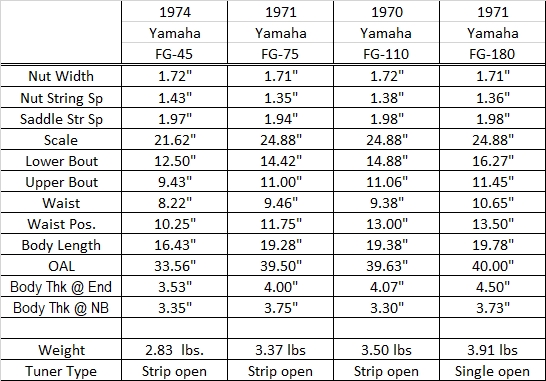
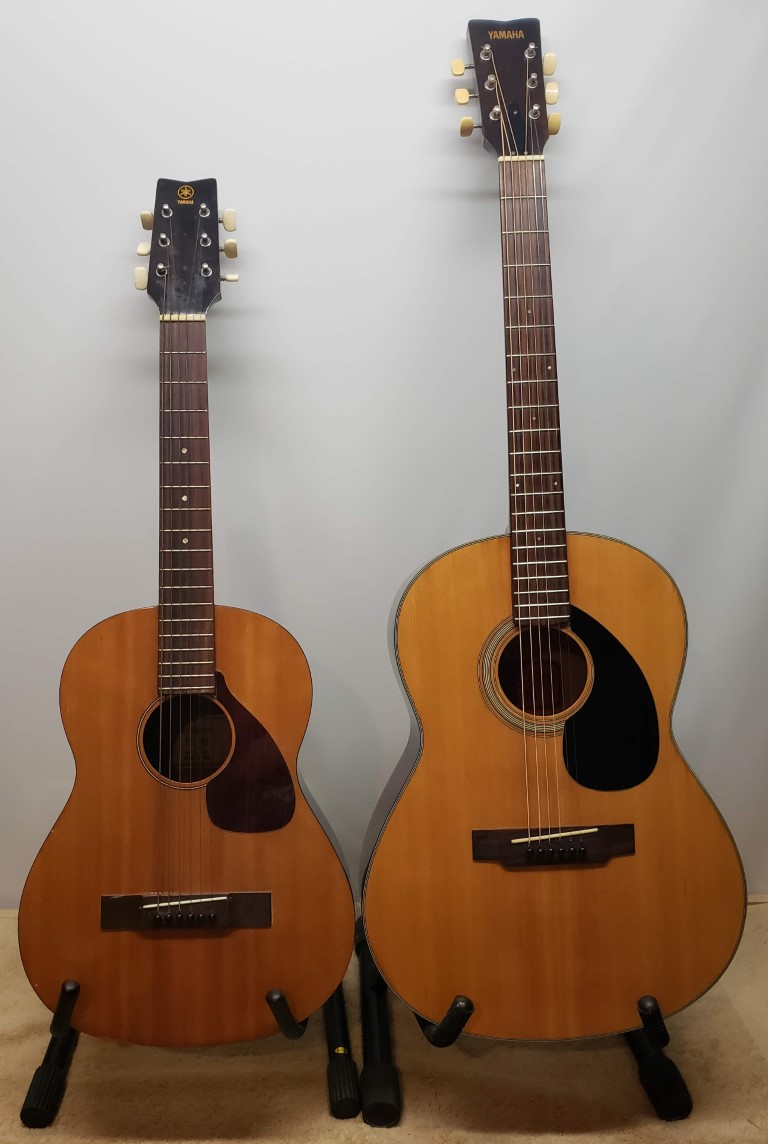
FG-45 & FG-75.

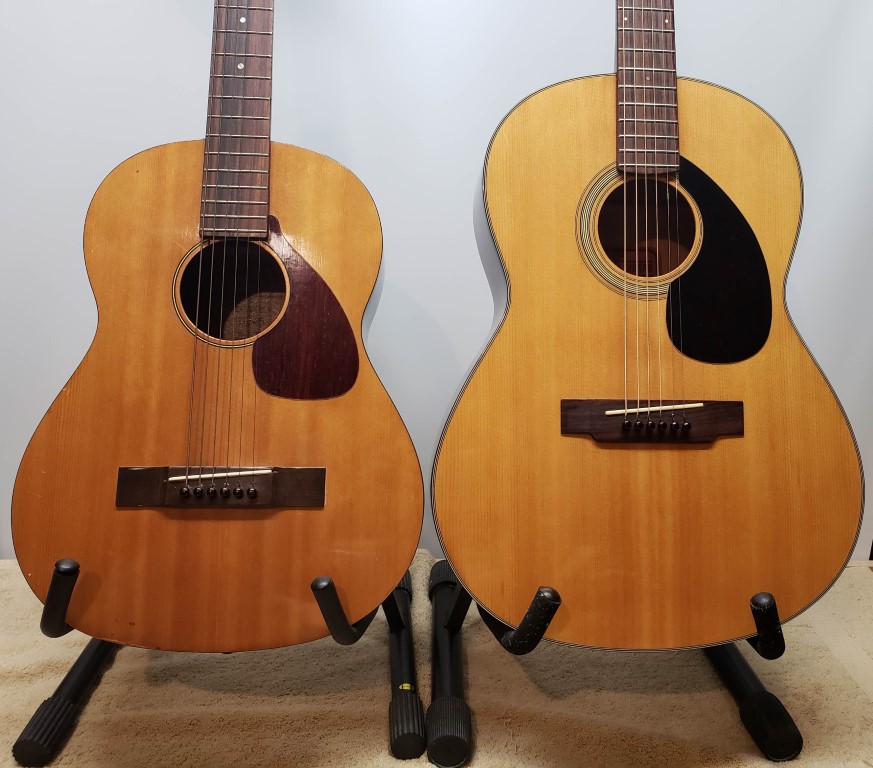
FG-45 & FG-75 Closeup.
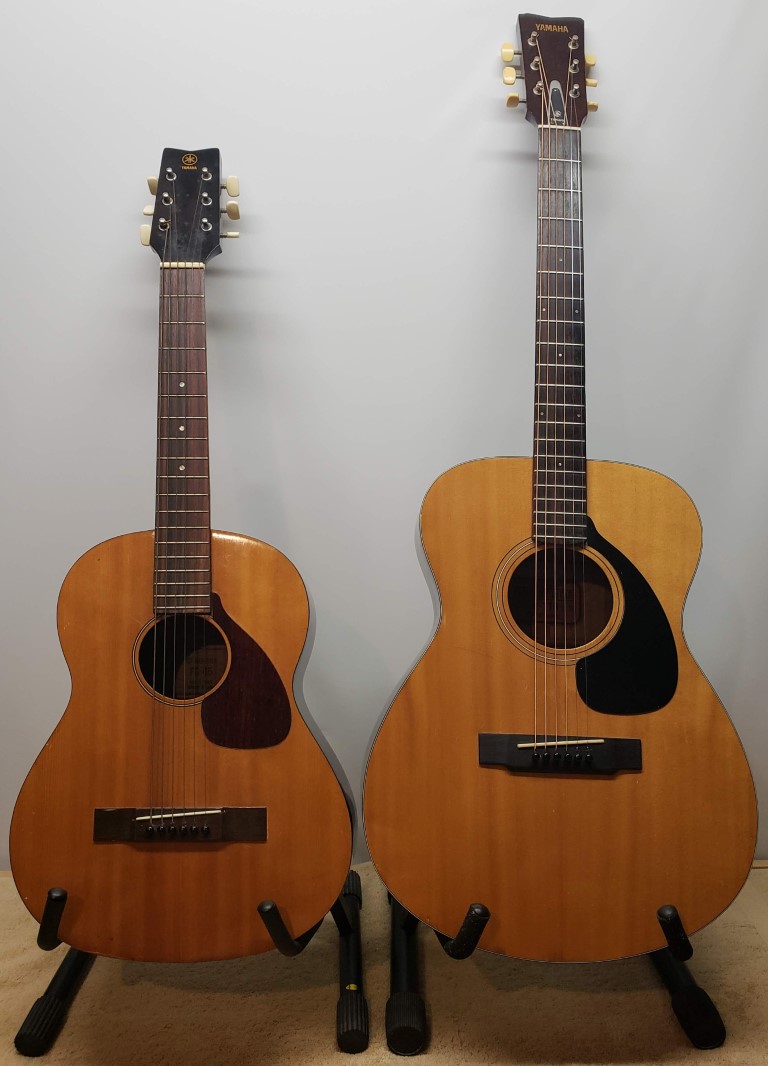
FG-45 & FG-110.
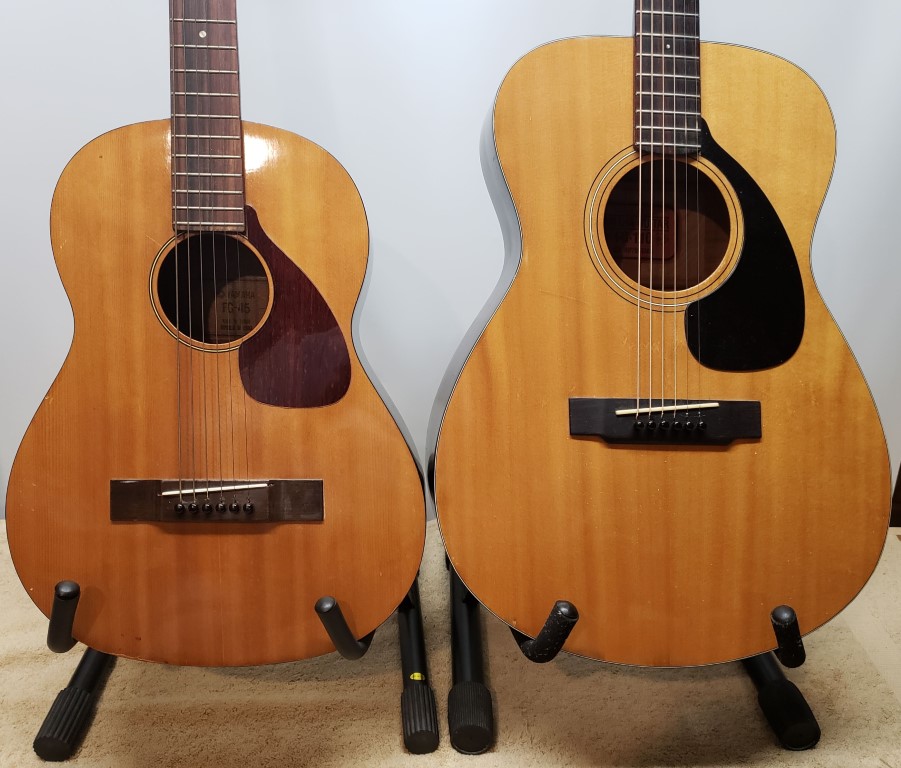
FG-45 & FG-110 Closeup.
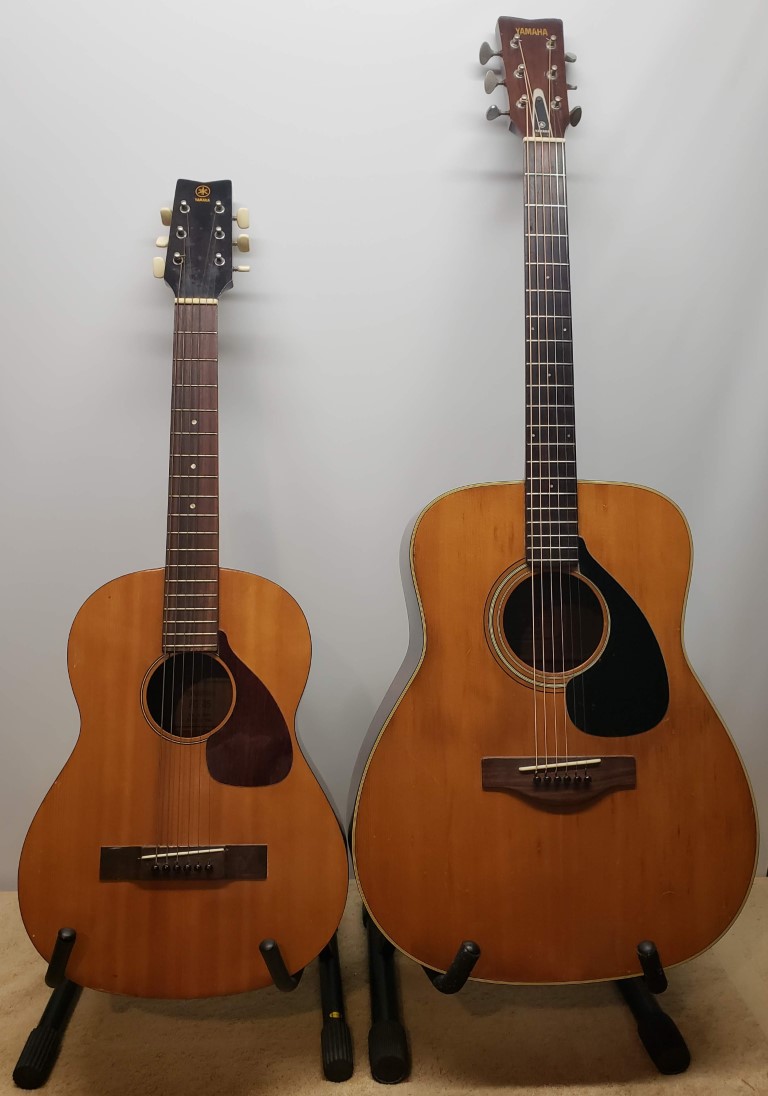
FG-45 & FG-180.
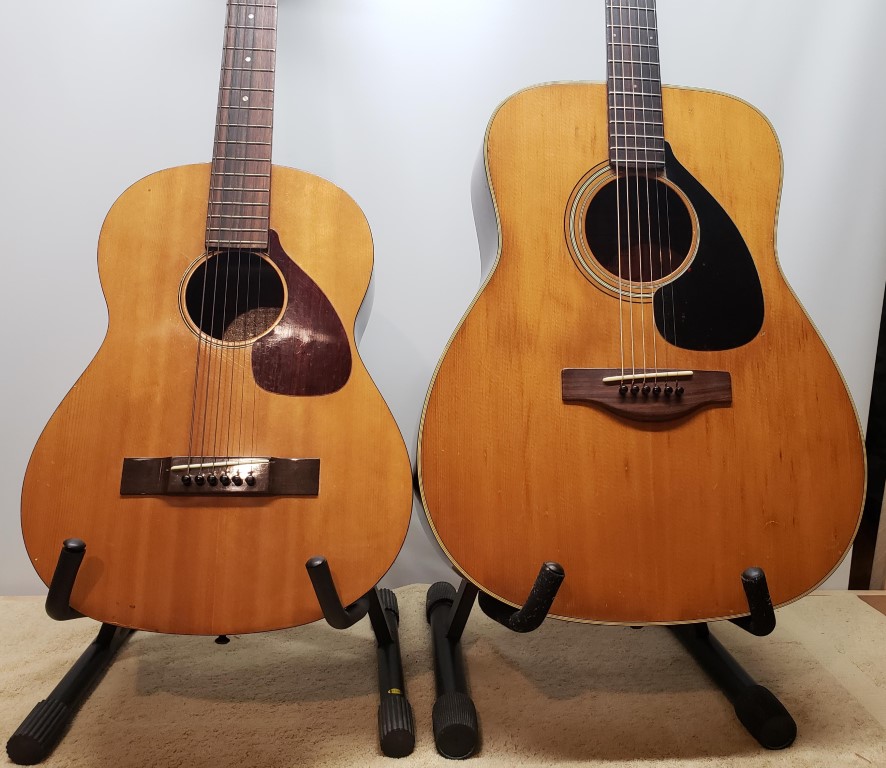
FG-45 & FG-180 Closeup.
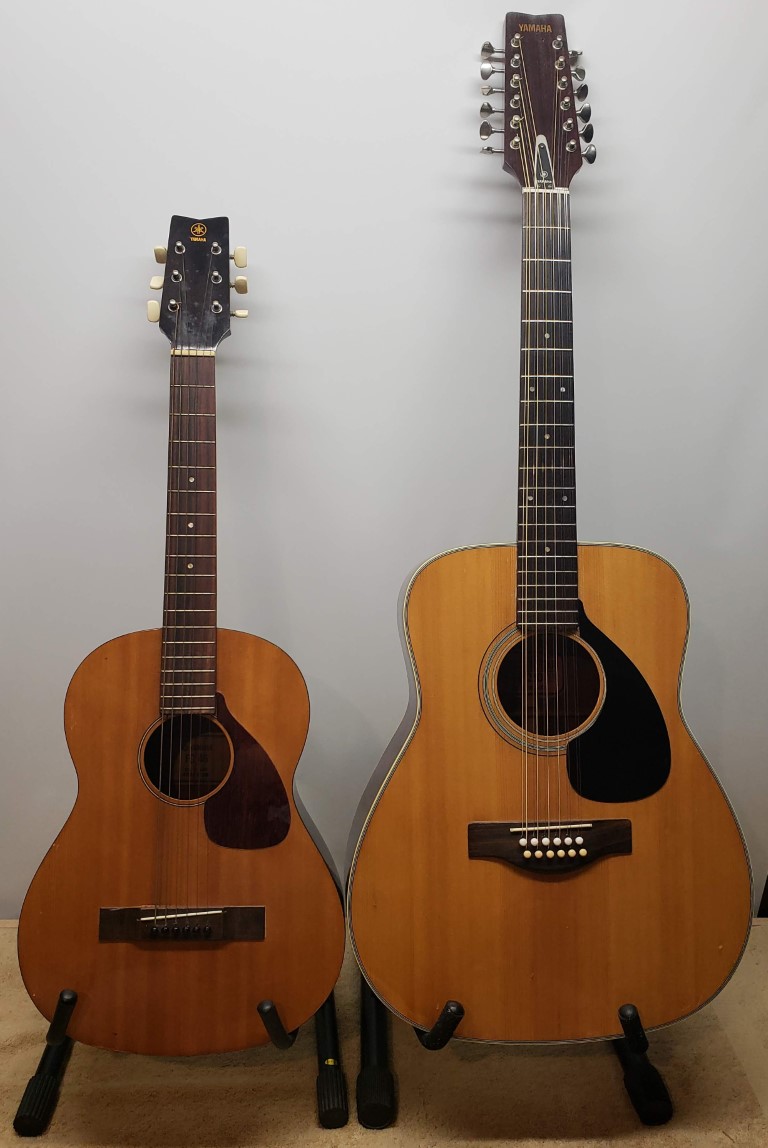
FG-45 & FG-230.
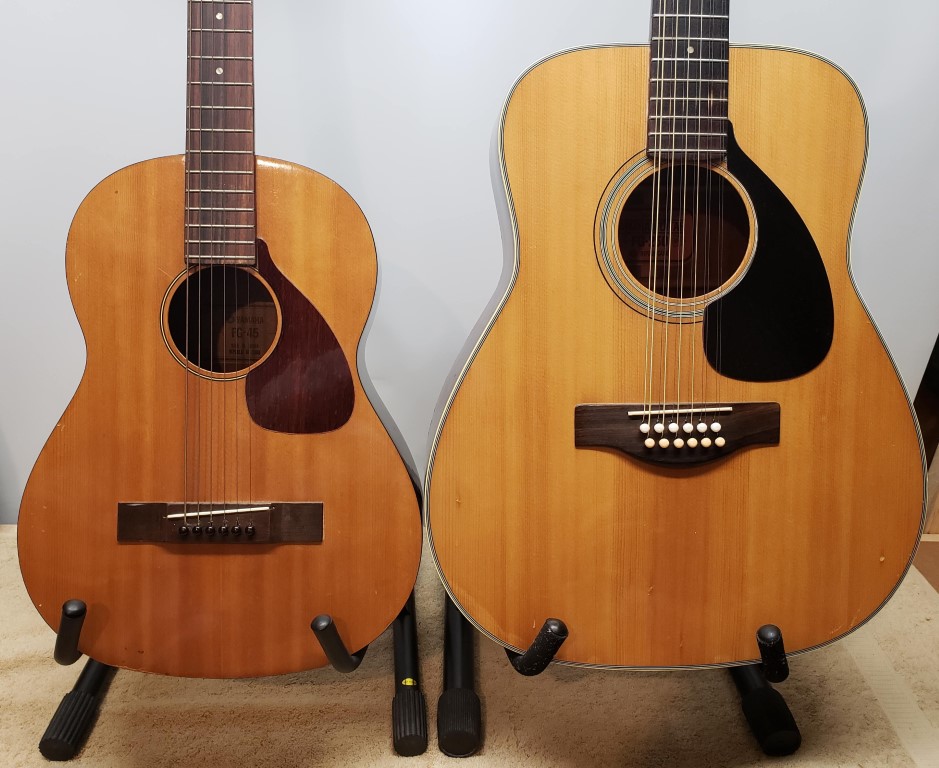
FG-45 & FG-230 Closeup.
First observation is it’s obviously smaller than a regular size guitar, it’s closer to a baritone ukulele than a guitar. And the bridge is farther from the sound hole. That’s because the neck meets the body at the 12th fret!!
The scale is 21.62” vs. the standard Yamaha 24.88”, which is actually 7/8 scale. The body length is also approx. 7/8 scale compared to the FG-75 & FG-110.
With the short scale and 12 frets to the body, the neck is only 10.81” long vs. 13.81” for the standard scale. With the short neck, and the need to reduce cost, they didn’t include a truss rod! The neck relief on this guitar is OK. The neck is also a bit thicker than usual. When I take the neck off I’ll find out if the put something in the neck to stiffen it.
Another unusual feature is the string spacing at the nut is 1.43”, wider than the normal narrow 1.37”. The string spacing at the saddle is the usual narrow 1.98”.
It uses the same 3 on a strip tuners with plastic knobs as the FG-75 & FG-110.
Also, the bridge is a classical style with a thru cut saddle slot. It doesn’t look to be rosewood, possibly mahogany. The bridge on this guitar is heavily tilted forward and some belly behind the bridge. The saddle is .079” (2mm) thick vs. the standard .118 (3mm).
Internally, it is X braced, although the 2 braces are flat. And there is a brace across the top behind the bridge perpendicular to the strings. Oddly, the bridge plate was installed too far forward, resulting in the bridge pin holes breaking thru at the far edge, splintering it. There are no other top braces. There are 3 very large back braces.
With its smaller size and no truss rod, there’s no surprise this is the lightest FG built. At 2.83 lbs it is 0.54 lbs lighter than the FG-75 and 0.67 lbs lighter than the FG-110.
But how does it sound?? With it being very light, the sustain is very good. However, the smaller, thinner body size has no bass and the tone isn’t very good. It’s boxy, similar to the FG-75, only with less bass it’s even less appealing. There’s probably a reason this model was only available for a couple of years. Even though it was less expensive than the FG-75 & FG-110, it doesn’t sound very good. And the smaller body size was probably geared toward a child, not the biggest market. Yamaha’s Guitar Archive shows a FG-45-1 model, but I’ve never seen one. It’s probable this odd duck of the FG line faded away at the end of 1974, never to be made again.
Size Comparison Chart


FG-45 & FG-75.

FG-45 & FG-75 Closeup.

FG-45 & FG-110.

FG-45 & FG-110 Closeup.

FG-45 & FG-180.

FG-45 & FG-180 Closeup.

FG-45 & FG-230.

FG-45 & FG-230 Closeup.

